#winfried nerdinger
Explore tagged Tumblr posts
Text
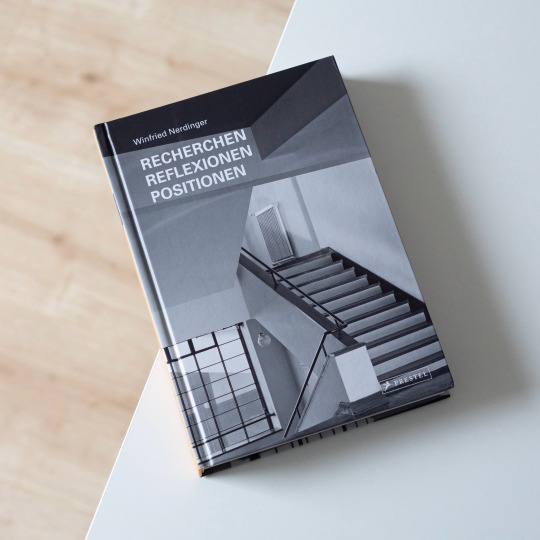
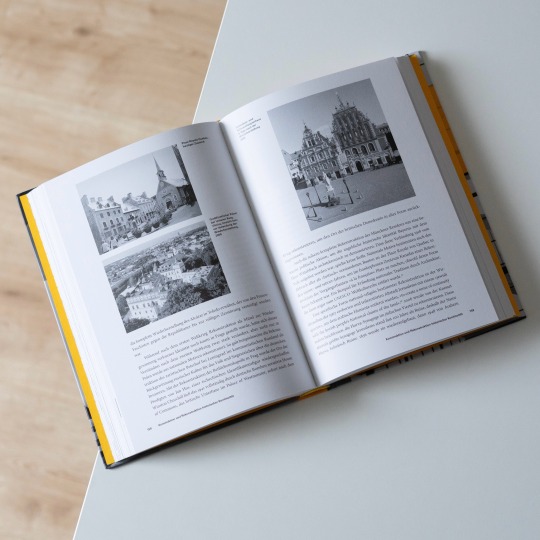
Winfried Nerdinger undoubtedly is one of Germany’s most distinguished architectural historians: between 1986 and 2012 he was professor of architectural history at TU München and with his trenchant contributions had a major impact on the discourses surrounding the Bauhaus and National-Socialism, the architectural and political history of Munich or the architecture of Nazi Germany and how to deal with it as built heritage of a grim past. In recent years Nerdinger also involved himself in the hard-fought discussions in the context of reconstruction in general and the reconstruction of buildings like the Berlin Palace in particular.
This year Nerdinger celebrated his 80th birthday, at welcome occasion to look back at past and present discourses in the form of a collection of essays: edited by Wilhelm Vossenkuhl and recently published by Prestel „Recherchen Reflexionen Positionen“ collects fourteen essential essays by Winfried Nerdinger in which he deals with his primary research topics.
And already in the first four essays the recalcitrant spirit of Nerdinger emerges: in the late 1970s and mid 1980s he was responsible for two exhibitions dealing with the Munich after the First and Second World War with which he recollected the council republic and its brutal suppression as well as the personnel continuities in the city’s planning and building administration before and after the Nazi era. His disclosures were met with fierce opposition and personal attacks.
Another sacrosanct topic with which Nerdinger provoked opposition is the Bauhaus and the legends surrounding it. Again, he brought up the painful subject of the continued existence of Bauhaus ideas in the Nazi era. Nerdinger convincingly demonstrates how the school’s ideas and design principles, and thus also its graduates and former students, were largely detached from society and thus compatible with almost any social system.
On a more recent note, Nerdinger interferes in the heated debates surrounding architectural reconstruction and pleads for more objectivity and less ideology: in a long essay he follows the thousands of years old tradition of reconstruction as a form of historic continuity. From the ancient world to the decades after the Second World War reconstruction was an effort legitimized by citizens and/or politicians and for the most part served as a means to strengthen identity and identification. On the other hand, many reconstruction projects hark back to private and not at all democratic initiatives, a circumstance that explains much of the opposition.
In view of the very insightful and at times bold essays collected in the book it doesn’t surprise that Winfried Nerdinger still is one of the most important voices of German architectural history. A highly recommended read!
#winfried nerdinger#architectural history#prestel#architecture book#essay collection#art history#german architecture#book
18 notes
·
View notes
Text
"Architektur in Deutschland im 20. Jahrhundert" Uwe Kullnick spricht mit Winfried Nerdinger - Histothek
[vc_row][vc_column][vc_column_text] “Architektur in Deutschland im 20. Jahrhundert” Uwe Kullnick spricht mit Winfried Nerdinger – Histothek Einführung Winfried Nerdinger (Hördauer ca. 04 min) https://literaturradiohoerbahn.com/wp-content/uploads/2024/03/HoS_Winfried-Nerdinger_Einfuehrung_upload.mp3 Gespräch zwischen Winfried Nerdinger und Uwe Kullnick (Hördauer ca. 66…
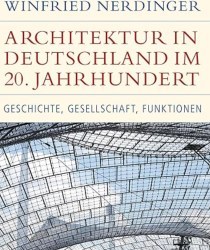
View On WordPress
#Architektur in Deutschland im 20. Jahrhundert#C.H. Beck#Hörbahn on Stage#Histothek#Uwe Kullnick#Winfried Nerdinger
0 notes
Link
Krankenhaus geht auch anders:
Was: Vortrag zum Thema „Healing Architecture“
Wer: Christine Nickl-Weller (TU Berlin), Begrüßung: Winfried Nerdinger Wo: Bayerische Akademie der Schönen Künste, Max-Joseph-Platz 3, 80539 München Wann: Montag, 13. Mai 2019, um 19:00 Uhr
1 note
·
View note
Photo
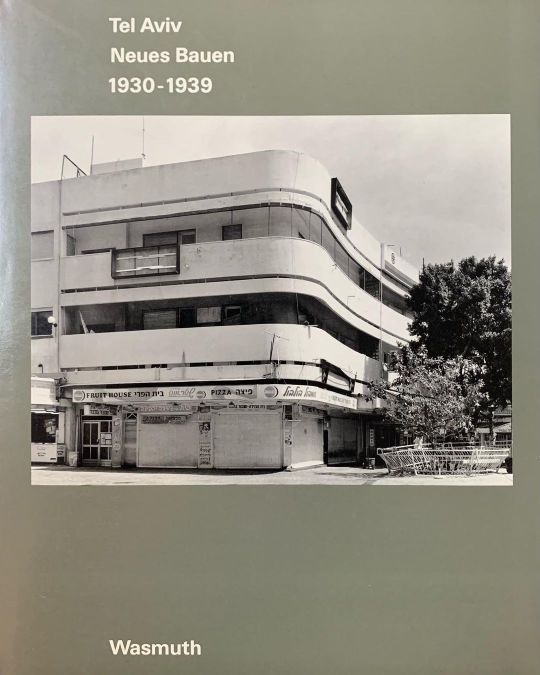
Tel Aviv Neues Bauen 1930-1939. Ernst Wasmuth Verlag, Tübingen. 1993. 4°. OLn. mit OU 249 S., Photographien by Irmel Kamp Bandau. Mit Beiträgen von Peera Goldman, Edina Meyer, Maril Winfried Nerdinger und Manfred Schneckenburger #architecture #telaviv #neuesbauen #bauhaus #kunstkiosk #kunstkioskimhelmhaus (hier: Zürich, Switzerland) https://www.instagram.com/p/CPcttQelZGv/?utm_medium=tumblr
0 notes
Text
PAMERAN ARSITEKTUR DAN DESAIN DARI JERMAN
PAMERAN ARSITEKTUR DAN DESAIN DARI JERMAN
Undangan
Selasar Sunaryo Art Space (SSAS) dan Goethe-Institut Indonesia mengundang anda untuk hadir dalam pembukaan pameran:
100 Jahre Deutscher Werkbund (100 Tahun German Werkbund)

ARSITEKTUR DAN DESAIN DARI JERMAN
oleh Institut für Auslandbeziehung, dipersembahkan oleh Goethe-Institut Indonesia dan Selasar Sunaryo Art Space
Kurator: Winfried Nerdinger
Dua belas seniman…
View On WordPress
0 notes
Photo

Manchmal schaffe ich es. Manchmal denke ich: Ach, was soll’s! Genießen wir den Tag, machen wir eine bella figura beim savoir vivre. Dann bekommen Sie einen netten Newsletter.
Aber es gibt auch andere Tage. Gerade ist mir ein alter Nürnberger Katalog von 1995 in die Hände gefallen. Darin beklagt der Architekturhistoriker Winfried Nerdinger, dass in München an allen faschistischen Bauten eine Hinweistafel darauf fehle, dass die Nationalsozialisten sie als Ausdruck ihrer Macht gebaut und genutzt haben. Und Nerdinger daraufhin der Münchner Musikhochschule alias „Führerbau“ geschrieben hat, das doch bitte zu ändern. Immerhin wurde hier 1938 das Münchner Abkommen unterzeichnet, der Beginn von Hitlers mörderischer Expansionspolitik. Die Antwort lautete, man wolle die Gefühle der Besucher nicht verletzten.
Eben jener Winfried Nerdinger ist jetzt zum Präsidenten der Bayerischen Akademie der Schönen Künste gewählt worden. Von den zwei, drei flüchtigen Begegnungen mit ihm weiß ich, dass er nicht aufhören wird, daran zu erinnern, dass Erinnerung immer noch nottut. Denn bis heute (bin extra vorbeigefahren) gibt es keine Tafel am Gebäude, die seine Nazi-Geschichte thematisiert (nur eine kaum sichtbare, die an das Münchner Abkommen erinnert). Und ich frage: Wer wird da geschont?
https://www.stmwk.bayern.de/kunst-und-kultur/meldung/6241/akademie-der-schoenen-kuenste-in-muenchen-unter-neuer-leitung.html
(via Erinnern schwer gemacht)
0 notes
Audio
Den Königsplatz hat man auch in etwa wieder in seinen Vorkriegszustand versetzt. Wo ist hier der Unterschied? Winfried Nerdinger: Es ist nicht der Vorkriegszustand. Obwohl ich immer darauf hingewiesen habe, dass der Königsplatz das flächenmäßig größte Monument ist, das wir aus der NS-Zeit in München haben, hätte ich nicht dafür plädiert, dass man diesen „Plattensee“ in toto erhalten muss. Ich hätte aber durchaus ein Reststück, eine harte Kante gelassen. Stattdessen hat man alle Spuren entfernt und etwas drauf gesetzt, was so tut, als sei es der alte Platz aus der Klenze-Zeit. In Wirklichkeit wurde der Platz dem Autoverkehr angepasst. Hier wurde wieder einmal die Geschichte einfach für den Bedarf der Gegenwart zurecht gebogen. Quelle: https://www.bauwelt.de/themen/interview/Die-umliegenden-Bauten-sind-unsere-Originale-Winfried-Nerdinger-NS-Dokumentationszentrum-Muenchen-2321462.html
0 notes
Photo

Heinz Tesar Architettura – Winfried Nerdinger – Electa EUR 29,00Scadenza: mercoledì lug-4-2018 12:15:19 CESTCompralo Subito per soli: EUR 29,00Compralo Subito | Aggiungi all'elenco degli oggetti che osservi
0 notes
Text
LITERATUR: Günter Abel - "Das Prinzip Rekonstruktion"

Bauwerke, die den öffentlichen Raum erfüllen und gestalten, greifen tief in unsere sozialen, gesellschaftlichen und individuellen Identitäten ein. Daher ist die Rekonstruktionsdebatte längst nicht nur eine, die sich ausschließlich um ästhetische Charakteristika rankt.
Abel widmet sich in seinem Text vier Problemen der Rekonstruktion und untersucht die Besonderheit der Identität von rekonstruierten Gebäuden, fragt welche Rolle Übersetzung und Interpretation im Re-Prozess spielen und untersucht die Merkmale syntaktischer, semantischer und kultur-pragmatischer Rekonstruktion. Darüber hinaus wird die Methodologie der Rekonstruktion im Hinblick auf Imagination und Kreativität beleuchtet.
>> Link zum Text
In: Uta Hassler und Winfried Nerdinger (Hg.): Das Prinzip Rekonstruktion, vdf Hochschulvlg; Auflage: 1., Auflage (20. Juli 2010)
0 notes
Text
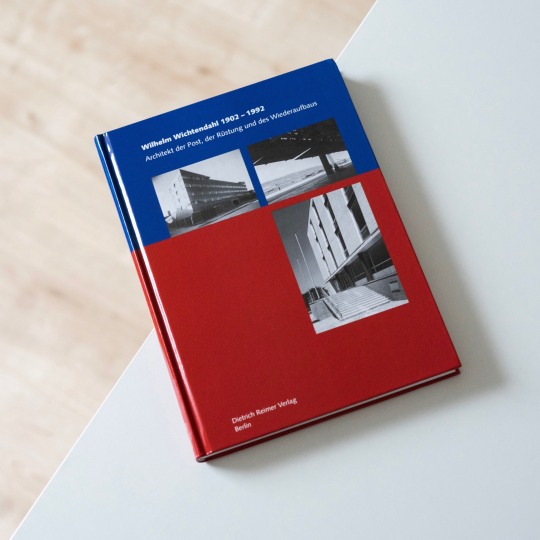
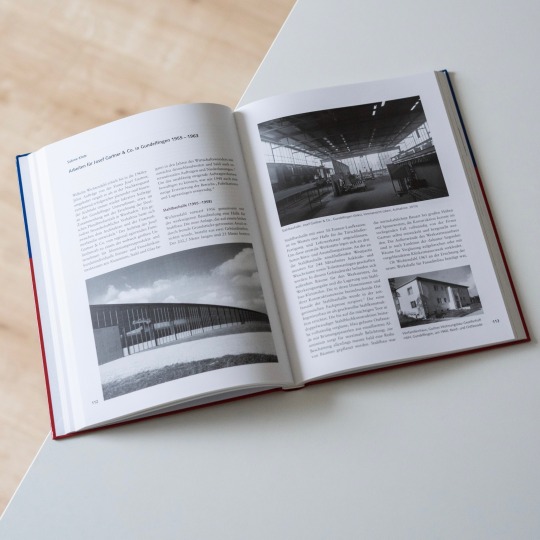
The biography of German architect Wilhelm Wichtendahl (1902-92) reads like many of his contemporaries’: Wichtendahl studied at TH München, after graduating worked in Robert Vorhoelzer’s progressive Postbauschule and during the Nazi era served as company architect for M.A.N. and Messerschmitt. His career is paradigmatic insofar as he spent the Nazi years in the alleged refuge of industrial architecture, a niche in which the authorities accepted modern architecture. After the war and with the excuse of having built for corporations rather than Nazi institutions Wichtendahl was seamlessly able to continue his career and significantly contributed to the reconstruction of the city of Augsburg. From 1952 onwards he also rose in the ranks of the Bund Deutscher Architekten (BDA), the leading association of German architects, and between 1959 and 1965 served as its president. In these capacities Wichtendahl also played a part in spreading the myth of industrial architecture as a refuge where progressive architects met and I deology played a minor role. Of course this was merely a maneuver to exculpate himself and his colleagues.
As keeper of the architect’s archive the now closed Architekturmuseum Schwaben in 2011 dedicated an exhibition and a catalogue to Wichtendahl’s conflicting work and biography: „Wilhelm Wichtendahl 1902–1992. Architekt der Post, der Rüstung und des Wiederaufbaus“, edited by Winfried Nerdinger and published by Reimer Verlag, critically evaluates and contextualizes the architect and his architecture, also beyond his role within the Third Reich and his association’s activities. Wichtendahl undoubtedely was a successful architect, especially in the fields of hospital and school architecture, whose plannings grew in size alongside the postwar economy. From the work catalogue nonetheless emerges the picture of an architect who, as Winfried Nerdinger notes in his foreword, never quite developed an individual handwriting.
The present volume is an important contribution to the exploration of German postwar architecture, the continuities between the latter and the Third Reich as well as their manifestation in individual biographies. Highly recommended!
#wilhelm wichtendahl#monograph#architecture#germany#nachkriegsmoderne#nachkriegsarchitektur#architecture book#german architecture#book#reimer verlag
11 notes
·
View notes
Photo
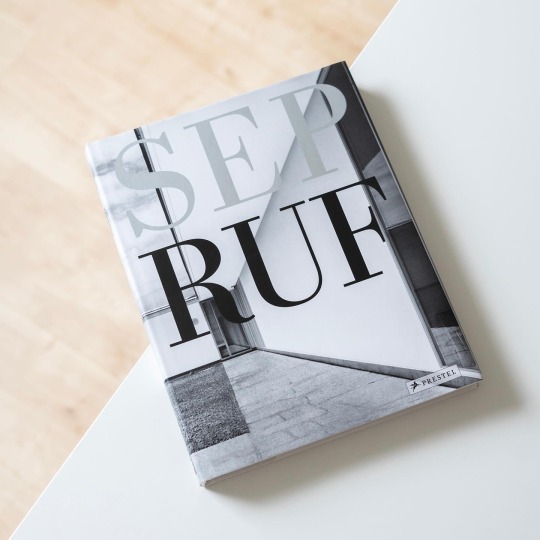
Although Sep Ruf was one of the most prominent exponents of German postwar architecture his work after his death in 1982 partly vanished into oblivion as confirm the few posthumous publications. Only on the occasion of his centenary in 2008 did his quintessential postwar modernism reappear in an exhibition at Architekturmuseum der TU Müchen and the present accompanying catalogue: „Moderne Mit Tradition. Sep Ruf 1908-1982“, edited by Winfried Nerdinger and Irene Meissner and published by @prestelverlag. It contains a selection of 31 buildings, a brief biography and an introductory essay by Winfried Nerdinger. Sep Ruf, best known for the German Pavilion at Expo 58 designed in collaboration with Egon Eiermann and the Kanzlerbungalow in Bonn, was a decided modernist but one with a keen sensibility for context and history: although his idiom always was identifiable as outspokenly modern his buildings, especially in existing context, never appeared as modern triumphs but as respectful and tight-fitting. Strangely they were often met with considerable criticism by the press and even fellow architects as Nerdinger underscores in his essay. This circumstance is even more surprising since Ruf’s architecture very much embodied postwar Germany and its aspiration to become a transparent, modern state that sought the definitive break with the Nazi past. With this said it deserves being mentioned that the book isn’t a collection of uncritical eulogies but also touches on Ruf’s entanglement with the Nazi regime and the projects he realized during 1933 and 1945 as well as the decrease in quality of his late work: probably due to the effects of the polio disease he contracted in 1958 his power and stringency in design gradually ceased in his late years.
„Moderne mit Tradition“ offers a comprehensive introduction to Sep Ruf’s life and work for all those seeking to familiarize themselves with the architect. For an in-depth discussion of his oeuvre I recommend Irene Meissner’s highly readable 2013 monograph „Sep Ruf 1908-82“.
#sep ruf#monograph#architecture#germany#nachkriegsmoderne#nachkriegsarchitektur#architecture book#book
25 notes
·
View notes
Photo

This year marks two significant and inextricably anniversaries in design history: first, the 100th birthday of Otl Aicher (1922-91) and second the 50th anniversary of the Munich Olympic Games, the tragic „cheerful games“ for which Aicher designed the entire visual program. Thus it was high time for a comprehensive monograph: „Otl Aicher: Designer. Typograf. Denker“, edited by Winfried Nerdinger & Wilhelm Vossenkuhl and recently published by Prestel, is exactly that as it offers insights into all areas of Otl Aicher’s work. Beginning with an excursion into the personality, strong moral compass and extensive philosophical education the book along numerous essays by Aicher and design experts illuminates milestones and key aspects of his work, i.e. his teaching, cornerstones of his designs, the Olympic Games of 1972 as well as excursions into architecture, his passion for photography and his typography. The result is a differentiated portrait that not solely praises Aicher’s undoubtedly influential and lasting activities but also uncovers contradictions and his trying personality. Guided by a resistant spirit that was formatively influenced by his opposition to the Nazi regime Aicher applied high moral standards to the design discipline that, as René Spitz elaborates, he also communicated in his teaching at HfG Ulm: for him design had to be liable to humanism, i.e. concrete and tangible rather than abstract and elevated. But not every student was willing to follow these sharply defined standards as a good deal of them reacted disconcerted or even appalled. Another interesting essay by Dagmar Rinker concerns the connection between the HfG Ulm and some of Aicher’s most important designs: with the „Entwicklungsgruppe 5“ he established a team of trusted colleagues, among them Hans (Nick) Roericht and Fritz Querengässer, that worked on commercial projects for Lufthansa, Braun etc. which cross-financed the school but also offered students first-hand insights into the design practice. The new monograph has been long-awaited and connects Aicher’s theory and practice in a highly readable volume that really deserves the attribute reference work. A must read!
37 notes
·
View notes
Text

The work of engineer and architect Frei Otto (1925-2015) is as rich as it is complex. His tensile structures, lightweight and beautiful at the same time, have always fascinated me but only recently have I taken a deeper interest in his work. In order to acquaint myself with the ever-evolving nature of Otto’s work the present volume seemed the perfect publication: „Frei Otto - Das Gesamtwerk: Leicht bauen - natürlich gestalten“, edited by Winfried Nerdinger and published in 2005 by @birkhauser_books alongside the architect’s major retrospective at Architekturmuseum der TU München. The tome spans a broad range of topics ranging from Otto’s form finding process, his use of biophysical regularities, the importance of physical model building for his designs up until his professional and personal network. Consequently it paints a multifaceted picture of an architect/engineer/artist whose contribution to modern structural engineering can hardly be overstated. As the book’s title indicates it also contains a complete work catalogue of all of Frei Otto’s projects from 1951 to 2004, a literally breathtaking collection of ingenious constructions that with time also took on a even more decidedly ecological dimension. „Frei Otto - Das Gesamtwerk“ is the ideal all-encompassing companion to dive deeper into a fascinating oeuvre that still is awe-inspiring.
#frei otto#monograph#architecture#germany#nachkriegsarchitektur#nachkriegsmoderne#engineering#architecture book#art history#book#book cover
24 notes
·
View notes
Photo

New in: the one and only Hans Döllgast monograph, edited by Technische Universität München and published by Callwey in 1987. It contains lengthy documentations of Döllgast’s key works Alte Pinakothek, the Munich cemeteries and the numerous pre and postwar churches scattered all over Bavaria. With the help of Winfried Nerdinger’s work catalogue in the back of the book and an overview of Döllgast’s furniture and interior designs it is the perfect companion for any research into this master of inventive reconstruction!
#hans döllgast#architect#monograph#architecture#germany#nachkriegsarchitektur#architektur#art history#architecture book#book cover
27 notes
·
View notes
Photo
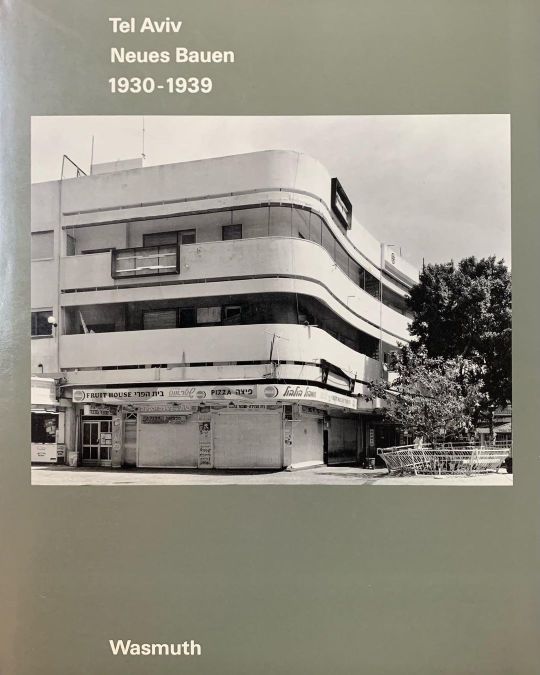
Tel Aviv Neues Bauen 1930-1939. Ernst Wasmuth Verlag, Tübingen. 1993. 4°. OLn. mit OU 249 S., Photographien by Irmel Kamp Bandau. Mit Beiträgen von Peera Goldman, Edina Meyer, Maril Winfried Nerdinger und Manfred Schneckenburger #architecture #telaviv #neuesbauen #bauhaus #kunstkiosk #kunstkioskimhelmhaus (hier: Zürich, Switzerland) https://www.instagram.com/p/CPcttQelZGv/?utm_medium=tumblr
0 notes